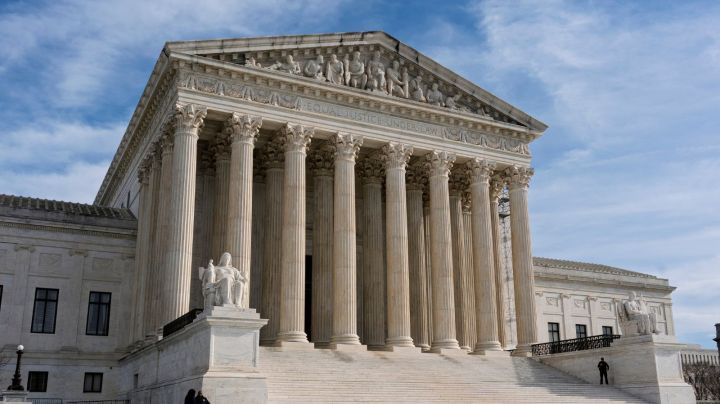What Does the Supreme Court Decision on Birthright Citizenship Actually Mean?

FILE - The Supreme Court is seen on Capitol Hill in Washington, Dec. 17, 2024. (AP Photo/J. Scott Applewhite, File)
The Supreme Court has just handed President Donald Trump’s administration a procedural win that could have long-lasting consequences on the birthright citizenship issue.
The Court, in a 6-3 vote, ruled that lower courts should not issue nationwide injunctions that go beyond relief for individual plaintiffs in cases, leaving the specific issue of birthright citizenship unresolved but making it harder for judges to block the administration going forward.
Justice Kavanaugh wrote. “In justiciable cases, this Court, not the district courts or courts of appeals, will often still be the ultimate decisionmaker as to the interim legal status of major new federal statutes and executive actions—that is, the interim legal status for the several-year period before a final decision on the merits.”
The decision also made it clear that it was not actually taking a stand on birthright citizenship, something that Trump sought to end with an executive order on the day of his inauguration. “First, the Court does not address the weighty issue whether the state plaintiffs have third-party standing to assert the Citizenship Clause claims of their individual residents,” Justice Samuel Alito wrote in his concurring opinion.
The Trump administration has argued that children of noncitizens are not “subject to the jurisdiction” of the U.S., and therefore do not qualify for automatic citizenship. Birthright citizenship makes anyone born in the United States an American citizen. The right was enshrined after the Civil War in the Constitution’s 14th Amendment.
Now, the new ruling allows the administration to issue guidance on how the executive order to end birthright citizenship can be implemented, which can only happen in 30 days, according to the Supreme Court. This comes after lower courts found the executive order unconstitutional. Instead of arguing the merit of the executive order, the administration proceeded with a workaround with the Supreme Court, leading to the “Court to hold that, no matter how illegal a law or policy, courts can never simply tell the Executive to stop enforcing it against anyone,” according to Justice Sotomayor’s dissent.
“This was a big decision, one that we’re very happy about,” President Trump told reporters in a White House press conference on June 27 after the Supreme Court decision. Later, he also said, “The Constitution has been brought back.”
“Americans are finally getting what they voted for,” Attorney General Pam Bondi also said. “No longer will we have rogue judges striking down President Trump’s policies across the entire nation.”
There have been no specifics about what will happen with the birthright citizenship executive order going forward, or how the administration plans to proceed.
In her dissent, Justice Sonia Sotomayor warned, “No right is safe in the new legal regime the Court creates.”